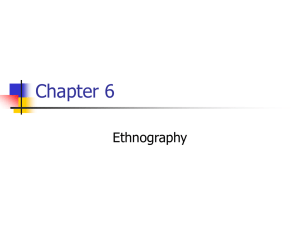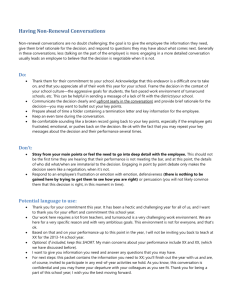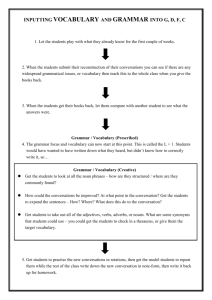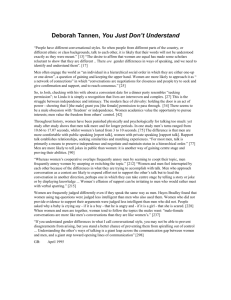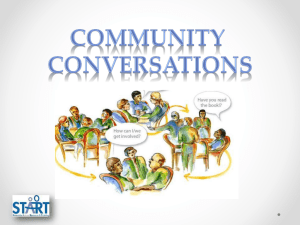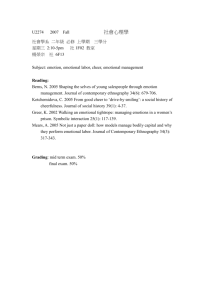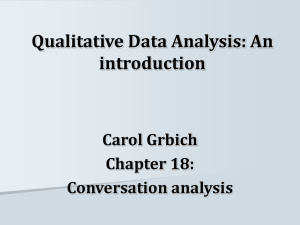2. The ethnography of speaking and the structure of conversation
advertisement
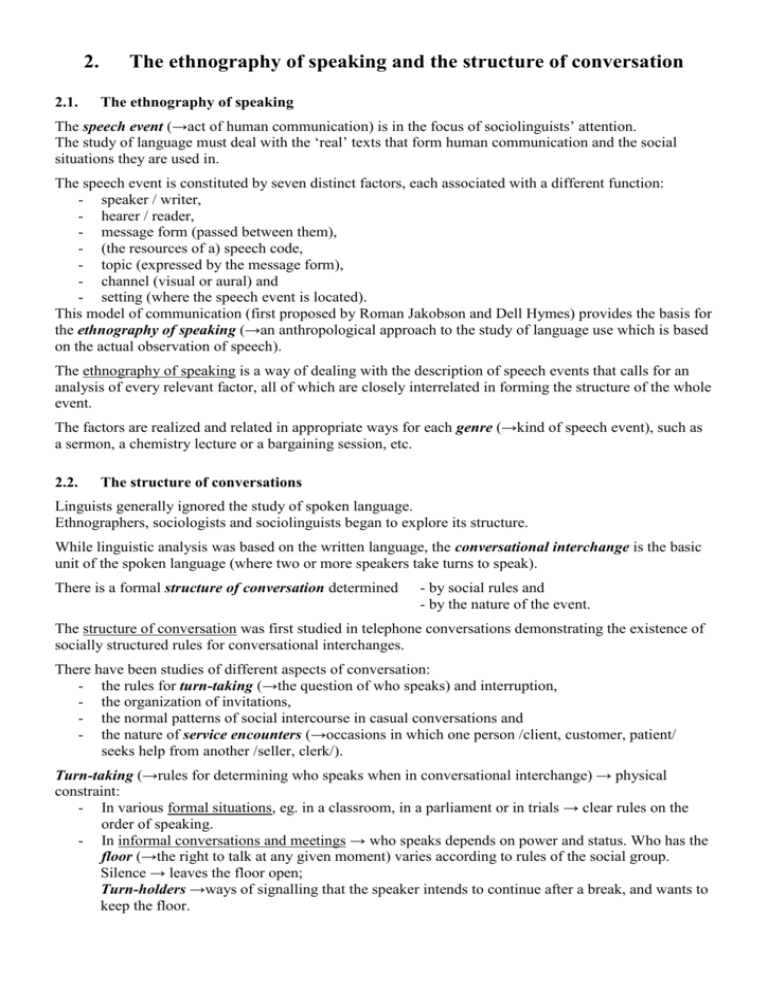
2. 2.1. The ethnography of speaking and the structure of conversation The ethnography of speaking The speech event (→act of human communication) is in the focus of sociolinguists’ attention. The study of language must deal with the ‘real’ texts that form human communication and the social situations they are used in. The speech event is constituted by seven distinct factors, each associated with a different function: - speaker / writer, - hearer / reader, - message form (passed between them), - (the resources of a) speech code, - topic (expressed by the message form), - channel (visual or aural) and - setting (where the speech event is located). This model of communication (first proposed by Roman Jakobson and Dell Hymes) provides the basis for the ethnography of speaking (→an anthropological approach to the study of language use which is based on the actual observation of speech). The ethnography of speaking is a way of dealing with the description of speech events that calls for an analysis of every relevant factor, all of which are closely interrelated in forming the structure of the whole event. The factors are realized and related in appropriate ways for each genre (→kind of speech event), such as a sermon, a chemistry lecture or a bargaining session, etc. 2.2. The structure of conversations Linguists generally ignored the study of spoken language. Ethnographers, sociologists and sociolinguists began to explore its structure. While linguistic analysis was based on the written language, the conversational interchange is the basic unit of the spoken language (where two or more speakers take turns to speak). There is a formal structure of conversation determined - by social rules and - by the nature of the event. The structure of conversation was first studied in telephone conversations demonstrating the existence of socially structured rules for conversational interchanges. There have been studies of different aspects of conversation: - the rules for turn-taking (→the question of who speaks) and interruption, - the organization of invitations, - the normal patterns of social intercourse in casual conversations and - the nature of service encounters (→occasions in which one person /client, customer, patient/ seeks help from another /seller, clerk/). Turn-taking (→rules for determining who speaks when in conversational interchange) → physical constraint: - In various formal situations, eg. in a classroom, in a parliament or in trials → clear rules on the order of speaking. - In informal conversations and meetings → who speaks depends on power and status. Who has the floor (→the right to talk at any given moment) varies according to rules of the social group. Silence → leaves the floor open; Turn-holders →ways of signalling that the speaker intends to continue after a break, and wants to keep the floor.
